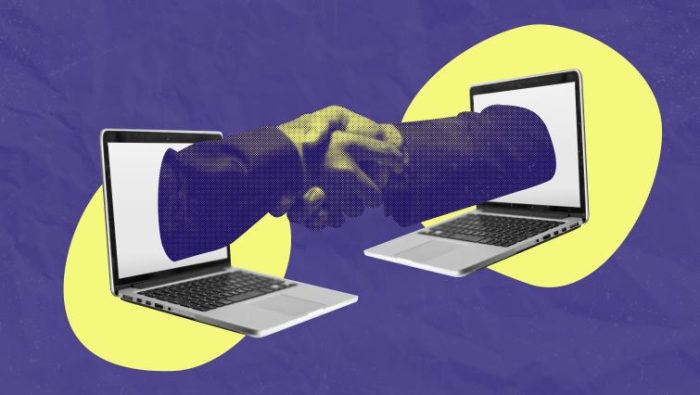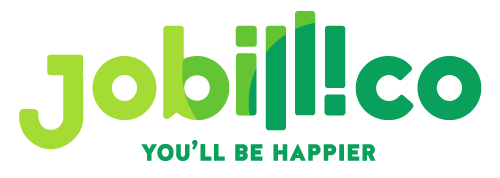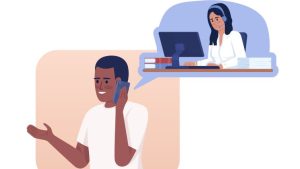Mastering the Art of Remote Job Interviews
 Publié le 21 October 2024
Publié le 21 October 2024
Impressing hiring managers and boost your chances of getting hired by mastering the art of remote job interviews.
The job market and the approach companies take toward screening potential candidates have undergone drastic changes in recent years. Employment-oriented strategies are rapidly evolving because an increasing number of organizations are embracing work-from-home policies; therefore, job prospects should also be ready for this shift. Remote interviews have become common and popular.
However, there is a huge difference between remote job interviews and standard in-person appointments. It is because of the technical processes that are alien to a lot of candidates, and they also must ensure that the professional aspect is projected while one is on the screen.
When it comes to mastering the art of remote job interviews, create a good impression on the interviewers, and increase the possibility of landing that sought-after remote job, you must know these primary strategies below.
1. Research the Company and Role
Among the most commonplace mistakes that candidates tend to commit is the lack of adequate research about the company and the position being applied for. This is essential for remote jobs as it shows the effort made by the prospect to understand the work cultures of the company apart from just the position, and it’s the start of mastering the art of remote job interviews.
For those applying to specific companies, such as digital marketing agencies, thorough research becomes even more critical. Understanding the agency’s client base, digital tools, and marketing strategies can give candidates a competitive edge.
Understanding the company’s remote work culture
Searching for remote work involves more than just looking through the ‘About Us’ webpage. Explore how the company implements its remote work policies. Do they offer complete remote working solutions or a hybrid system? What are their norms for teamwork, communication, and collaboration? Understanding these aspects of the organization will help in tailoring your application and convincing them of how you fit in their work environment.
The company also has this information in their press releases regarding the remote working policies, their LinkedIn updates, and their blog. Also, mentioning this research in the interviews will set you apart from the other candidates who may not have gone this extra mile.
Highlighting relevant experience
Modify your responses to indicate how your skills and experience are appropriate for the position and for working in a remote environment. For example, if the organization uses a project management tool, payroll management tools, or paystub generators, point out your experience with that specific tool. This shows that the learning curve is not steep and that you can step into the role easily.
An understanding of their culture regarding remote work also allows you to come up with relevant questions to ask in the interview. This may include, for instance, asking about the most preferred messaging features (such as Microsoft Teams or Slack) or the strategies employed to maintain teamwork in a situation where people are in different locations. It also makes you look enthusiastic about the job in a non-aggressive manner, and also respect the fact that the company is about productivity even when working from home.
2. Preparing Your Space for Success
Creating an appropriate physical space is the very first thing to work on if one wants to overcome the obstacles of a remote job interview. As much as the responses you give to the interview questions are significant, so is your general demeanor in any public setting. For example, a very cluttered background or even loud people tend to distract interviewers, thus dimming the chances of being favorably placed.
A professional setup
In this case, it is equally important to create a neat as well as presentable working space at home. Look for somewhere quiet without so much background noise. If you have a roommate or others in the house, please inform them of the interview to avoid any possible distraction. If possible, use a simple, plain audio-video backdrop, such as an arranged place or even a bare wall, to ensure that the interviewer’s attention is only on you and not on what is surrounding you.
Lighting and camera placement
Similarly to preparing one’s self for an interview, good light is very important when we prepare for an interview over the internet. If there is a chance, one should face a window, as that is the best natural light possible. If this cannot be done, ensure that your face is well-lit and visible using the desk or a ring light lamp.
Background noise and distractions
Before the interview, ensure that the environment is free from any background noise or distractions that would otherwise interfere with the discussion. While some activity cannot be helped, like a siren or a car that passes by, many distractions can be avoided by taking precautionary measures such as switching off the phone alerts and muting other unwanted gadgets.
Also, if you are in a very noisy environment, put on noise-cancelling headphones. Such noise-cancelling headphones will enable you to listen properly to your interviewer, and thus uninterrupted conversing will be achieved.
3. Test Your Technology
While carrying out remote jobs, interviews are one of the many points that might cause technical problems. Technology related to remote interviews can help or hinder you, unlike face-to-face interviews where technology plays a minimalistic role. Before the beginning of the actual interview, ensure that all being relied upon in terms of technology is working properly.
Pre-interview tech checks
A few days before your interview, conduct a comprehensive evaluation of the electronic devices you will utilize for the interview. Make sure that they all work well before the interview: the microphone, the camera, the audio settings, and the internet connection. It is generally advisable, if you are not certain of the stability of your internet, to use wired connections via Ethernet cables instead of Wi-Fi.
Familiarize yourself with the interface of the video conferencing platform that will be used for your interview. Each of these applications or platforms, for example, Zoom, Google Meet, and Microsoft Teams, has its advantages and disadvantages. You ought to be able to mute and unmute yourself, start and stop the video, and share the screen when necessary. Knowing how these things work can help you avoid making unnecessary errors when the actual interview takes place.
Back-up plans
Even the best-laid plans can sometimes face glitches. In such a situation, it is important to have defensive tactics. For example, if you have to switch to a phone interview, make sure that your mobile phone is fully charged as well as within your reach. It shows that the candidate has a sense of professionalism and also flexibility to inform the interviewer about dealing with such unforeseen circumstances.
Also, in case of any technical issues, please inform the interviewer as early as possible. When you realize a problem and present a corrective action, it proves that you can handle stress in the course of work, which is an asset when working in such an environment. Such issues include but are not limited to video lag and connection loss.
4. Dress Professionally, Even Remotely
Considering that the interview is being conducted online and you are in the comfort of your home, it may be quite alluring to dress in a more relaxed fashion than other face-to-face interviews. Still, for remote interviews, it is important to maintain a professional image. It reflects your interest in the role you are applying for.
Dressing for success
Do remember to get ready for the video interview as if you were meeting the interviewer face-to-face. This means putting on formal attire, including the bottoms. You never know when a reposition of the camera may be required or even a casual stand-up, so not being ready for such is not welcome.
Wardrobes should be ready for the cameras. Do not wear too bright colors or busy prints, as they can be distracting or interfere with the camera’s quality. Most preferred colors usually include plain white, black, or navy-colored solids. As is the case before a physical interview, your clothing should be clean and ironed.
The psychological effect of dressing well
Dressing appropriately for work also helps one psychologically. For example, it may enhance your self-confidence and help you to take a more formal stance toward the interview. This confidence will be reflected in your gestures, body posture, and overall performance. In comparison to a face-to-face meeting, if you maintain a more elevated level of seriousness during the interview, the likelihood of success is enhanced.
5. Body Language and Communication Tips
In remote interviews, what you utter is not the only means of communication. The success of any virtual interview primarily relies on the interviewee’s posture, how they modulate their voice, and how they manage the turn of discussions.
Maintain virtual eye contact
Maintaining eye contact while speaking, even over a screen, is one of the most important aspects of this particular skill. With the natural tendency of pointing the eyes to the person’s face on the screen that has the interviewer, looking straight into the camera may be difficult. It is also advisable to look at the camera when talking to create the illusion of eye contact and a better and more personal connection.
To make the eye contact appear real, it is advisable to place the camera at eye level. Do not place the camera too high so that the interviewer appears far away or too low, which gives an unattractive angle. A reasonable camera location is professional and shows the engrossment of the person in what he or she is doing.
Use positive body language
In an interview, body language is essential for communicating effectively. Ensure that your back is straight, shoulders are dropped, and palms are opened to portray honesty and integrity. Do not lean back in the chair or look down or away from the screen since it may make you look bored.
You can show your engagement and focus by offering a smile and a nod when appropriate during the conversation. However, do not overdo it; make gestures that are appropriate to the subject matter and feel organic.
Effective communication
As in any other interview, pacing is important because there might be tiny audio delays. Do not rush to speak, or rather, inconvenience the audience with unnecessary silence. After someone has completed their sentence, it is advisable to pause a little before responding to avoid cutting them off awkwardly. The secret is in the simplicity.
Speak clearly and at an understandable speed for one to be heard well. Even more so during remote interviews, in which different tones of voices are played where such in-person interviews have more non-verbal clues, your voice modulation becomes more important than speech. When likewise speaking, affix a confident and excited demeanor to your voice.
6. Follow-Up After the Interview
After the interview, there’s still an opportunity to make a memorable impression. In a vital stage of remote interviews, follow-up properly and in writing communicates an important aspect.
Crafting the perfect thank-you note
Send a thank you note within 24 hours of meeting the interviewer. Express your anticipation for the job once more and show appreciation for the interview again. Make mention of a particular dimension of the interview that should be discussed to tailor your message. Such aspects generally include a characteristic of the company or a challenge it is dealing with in the present period.
Also, it is a great chance to reiterate your relevance to the position. If you can, express your willingness to work from home for the benefit of the company and outline any cool issues that you feel were quite crucial regarding the post.
Conclusion
Mastering the art of remote job interviews require strategic planning, meticulousness, and good communication skills. Establishing a formal ambiance, testing one’s gadgets, putting on the right attire, and speaking politely can earn someone a good rapport, hence increasing the chances of getting remote employment. Both the writing and sending of the follow-up note are essential in an interview and should be detailed enough to make the desired impression. With the right preparation and mindset, you will be able to place yourself as the ideal fit for any remote job and overcome the challenges that come with remote interviews.







